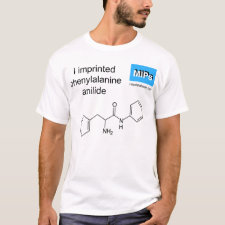
Authors: Njikang G, Liu GJ, Hong LZ
Article Title: Chiral Imprinting of Diblock Copolymer Single-Chain Particles.
Publication date: 2011
Journal: Langmuir
Volume: 27
Issue: (11)
Page numbers: 7176-7184.
DOI: 10.1021/la2006887
Abstract: This Article reports the molecular imprinting of polymer single-chain particles that have a radius ~3.7 nm. For this, the template l-phenylalanine anilide or l-FAA and a diblock copolymer PtBA-b-P(CEMA-r-CA) were used. Here, PtBA denotes poly(tert-butyl acrylate), and P(CEMA-r-CA) denotes a random block consisting of cinnamoyloxyethyl methacrylate (CEMA) and carboxyl-bearing (CA) units. In CHCl3/cyclohexane (CHX) with 64 vol % of CHX or at fCHX = 64%, a block-selective solvent for PtBA, PtBA-b-P(CEMA-r-CA) formed spherical micelles. The core consisted of the insoluble P(CEMA-r-CA) block and l-FAA, which complexed with the CA groups. Pumping slowly this micellar solution into stirred CHCl3/(CHX) at fCHX = 64% triggered micelle dissociation into single-chain micelles, which comprised presumably a solubilized PtBA tail and a collapsed P(CEMA-r-CA)/l-FAA head. Because the solvent reservoir was under constant UV irradiation, the photo-cross-linkable units in the P(CEMA-r-CA) head cross-linked, and the single-chain micelles were converted into cross-linked single-chain micelles or tadpoles. Synchronizing the micelle addition and photoreaction rates allowed the preparation, from this protocol, of essentially pure tadpoles at high final polymer concentrations. Imprinted tadpoles were procured after l-FAA was extracted from the tadpole heads. Under optimized conditions, the produced imprinted tadpoles had exceptionally high binding capacity and high selectivity for l-FAA. In addition, the rates of l-FAA release from and rebinding by the particles were high
Template and target information: l-phenylalanine anilide, l-FAA



Join the Society for Molecular Imprinting

New items RSS feed
Sign-up for e-mail updates:
Choose between receiving an occasional newsletter or more frequent e-mail alerts.
Click here to go to the sign-up page.
Is your name elemental or peptidic? Enter your name and find out by clicking either of the buttons below!
Other products you may like:
 MIPdatabase
MIPdatabase









